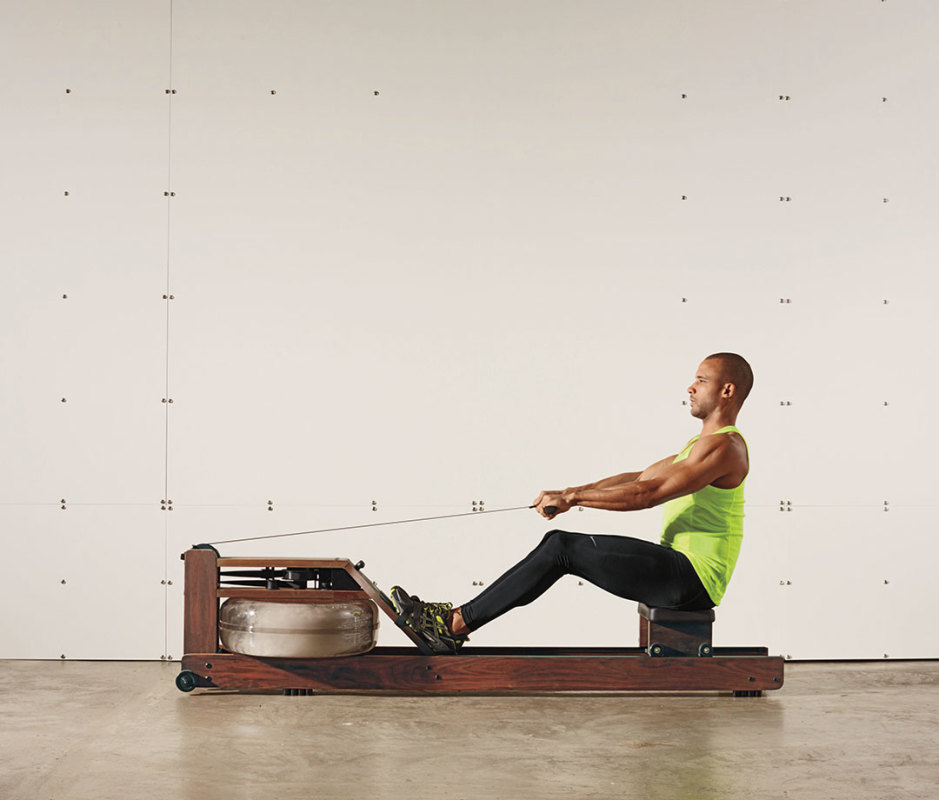What Zone 2 Heart Rate Is and How to Calculate Yours
If you’re fanatical about powerlifting or new to lifting, you’re likely more concerned with shoulder workouts and perfecting your Arnold press than boosting your VO2 max. Endurance athletes like marathoners, triathletes, and cyclists are more attuned to improving their cardio
Don’t get us wrong, there’s absolutely nothing wrong with wanting to look and feel your best, but if your fitness regimen was created with just strengthening those vanity muscles in mind, you may be skipping out on training the most important muscle of them all—your heart. There are endless ways to perform cardio, from HIIT and Tabata training to shadowboxing or even walking. But a more subtle aspect of cardio training involves targeting a particular heart rate zone, like zone 2 heart rate, to reap its unique benefits.
What Is Zone 2 Heart Rate?
Zone 2 cardio rate training means working in one of five heart rate zones at 60-70% of your max heart rate. “Zone 2 is where the magic happens—your body is optimized to go longer at a more manageable intensity when you work in Zone 2,” says Milica McDowell, doctor of physical therapy, certified exercise physiologist, and VP of operations at Gait Happens.
What Are Heart Rate Zones?
While heart rate zones might sound a little confusing, it’s easier if you imagine your heart like a dial with different intensity settings. Each time you turn the dial up, you increase your heart rate a little more. Each level is based on a percentage of your max heart rate—how fast your heart could beat at max effort.
The intensity of your workout directly impacts your heart rate. For example, a gentle stroll is obviously a lot less demanding than an all-out sprint. While both are considered cardio, they affect your heart rate and body differently. Heart rate zones are how we categorize this effect.
Zone 2 training is the basis for everyone’s fitness. By using Zone 2 training (read: staying in this threshold), you can increase your aerobic capacity over time. Think of training for your first marathon. While the initial run may leave you breathless and cramping, with practice and the right training, you’ll sustain that effort without jacking up your heart rate.

Jorg Badura
Zone 1 (50 to 60% of Your Max Heart Rate)
Zone 1 is your “warmup and cool down” zone. It’s ideal for preparing your body to work out or recovering afterward, boosting blood flow with light effort. You’ll usually hit zone 1 when you’re doing lower-intensity exercise like taking your dog for a walk or stretching before a big lift.
Zone 2 (60 to 70% of Your Max Heart Rate)
Zone 2 is the “fat-burning endurance” zone that helps you build an aerobic base and improve your body’s ability to use fat for fuel. The effort level is comparable to an easy jog where you can hold a conversation—or a leisurely bike ride.
Zone 3 (70 to 80% of Your Max Heart Rate)
Zone 3 is the “aerobic endurance” zone that really challenges your cardiovascular system to build stamina and push your limits. In this zone, you’ll not only burn fat but increase muscle mass. It’s the typical zone for a steady running pace.
Zone 4 (80 to 90% of Your Max Heart Rate)
Zone 4 is your “high-intensity” zone, where you tap into anaerobic capacity, like during a hard sprint that leaves you out of breath or a really intense HIIT class. Unlike zone 2, you won’t be able to hold a conversation; your muscles will start to feel that familiar burn only achieved by pushing your body to its limits; and you’ll only be able to stay in this zone for a short period of time.
Zone 5 (90 to 100% of Your Max Heart Rate)
Zone 5 is the “max effort” zone for short bursts of all-out speed, reserved for a final sprint to the finish line where you’re giving every last drop of effort. While zone 5 isn’t sustainable for long periods of time, it can help you build power like no other.
Related: This Dad’s Home-Office Workout Hack Is Genius
Benefits of Zone 2 Heart Rate Training
Zone 2 heart rate training is critical for boosting cardiovascular endurance and stamina, according to Bradley Serwer, MD, an interventional cardiologist with VitalSolution. “Lower-intensity workouts tend to be easier on your body during recovery and help form a solid foundation for higher-intensity workouts down the road,” he says.
McDowell adds, “This zone also helps you optimize your baseline endurance, which allows you to enjoy a hike, a marathon session of pickleball, or a long ski day with ease.”

Justin Steele
Finding Your Zone 2 Sweet Spot
So, if you’re wondering, “What is my zone 2 heart rate?” It’s worth knowing that while you can use a zone 2 heart rate calculator, several factors influence your individual rate, including age, fitness level, body composition, genetics, and stress.
Research indicates that a personalized zone 2 heart rate calculation is ideal for really targeting it correctly. You can use a heart rate monitor for a more accurate look at it, but if you don’t have one, using a formula is a good alternative. “Everyone’s baseline heart rate is different, but having a good understanding of your individual physiology is very beneficial in optimizing and personalizing your training,” says Serwer.
Related: Obsessing Over Your Health? The Case for Ditching Fitness Trackers
Calculating Your Zone 2 Heart Rate
There are a couple ways to calculate your zone 2 heart rate by age. The most common formula for estimating your maximum heart rate (MHR) is this:
Step 1: Find Your Maximum Heart Rate (MHR)
- Subtract your age from 220.
- Example: If you’re 35 years old, 220 – 35 = 185. Your estimated MHR is 185 beats per minute.
Step 2: Calculate Your Zone 2 Range
- Lower end of zone 2: Multiply your MHR by 0.60 (60%).
- Example: 185 x 0.60 = 111 beats per minute
- Higher end of zone 2: Multiply your MHR by 0.70 (70%).
- Example: 185 x 0.70 = 129.5 beats per minute (round up to 130)
- Your zone 2 target heart rate is 111-130 beats per minute.
The Karvonen Formula
Determining how to calculate zone 2 heart rate with the Karvonen method is a bit more personalized than just your age since it factors in your resting heart rate (RHR) to give a more precise target. Here’s how it works:
- Find your MHR: Use the 220-age formula (or get it measured directly).
- Find your RHR: Measure your pulse first thing in the morning before you get out of bed.
- Calculate your heart rate reserve (HRR): MHR – RHR = HRR
- Apply the Karvonen formula: (HRR x % intensity) + RHR = target heart rate
Using the previous example of MHR of 185, if your RHR is 60, here’s how to find your Zone 2 heart rate (60-70% intensity):
- HRR = 185 – 60 = 125
- Lower end of Zone 2: (125 x 0.60) + 60 = 135 bpm
- Higher end of Zone 2: (125 x 0.70) + 60 = 147.5 bpm (round up to 148 bpm)
Related: How to Do a Cossack Squat for Improved Strength and Mobility
Putting Zone 2 Into Action
After you’ve got your zone 2 estimates, McDowell suggests picking an activity where you can stay in that range (for the basic example, that’s 111 to 130 bpm) for a sustained period. While in this zone, you should be able to speak conversely in full sentences without feeling overly short of breath. “This level of exercise is typically seen with moderate cycling, running, swimming, hiking, or low-intensity fitness classes,” says Serwer.
Most data suggests 30 to 40 minutes of zone 2, twice a week, is a good starting point. “The CDC recommends 150 mins of cardio activity per week for healthy adults, so I’d suggest trying to hit that recommendation as a baseline, which will show greater improvement than just two days a week,” adds McDowell.
Why Track Your Zone 2 Heart Rate?
Heart rate is easy to track (most smartwatches and sport watches give fairly accurate readings) and is a strong indicator of your fitness levels. McDowell explains, “If your heart rate is jacked when you don’t feel like you’re working hard, it’s a good example of actual fitness vs. perceived fitness. Heart rate can’t lie.”
Using heart rate as a data point is more useful than VO2 max tracking, as heart rate adaptations from exercise are very straightforward—if you get fitter, your resting HR and exercise HR drop, explains McDowell. Another important data point related to HR is your recovery heart rate, which is how fast you return to base heart rate after an exercise session, which McDowell says can be a helpful measurement when assessing how fast you’re improving.
If you don’t have a smartwatch, McDowell says the old school (finger on your wrist pulse, count to six, multiply by 10) method of taking heart rate is accurate enough to use in a pinch, so there’s really no barrier to using this metric to track your training and progress.

